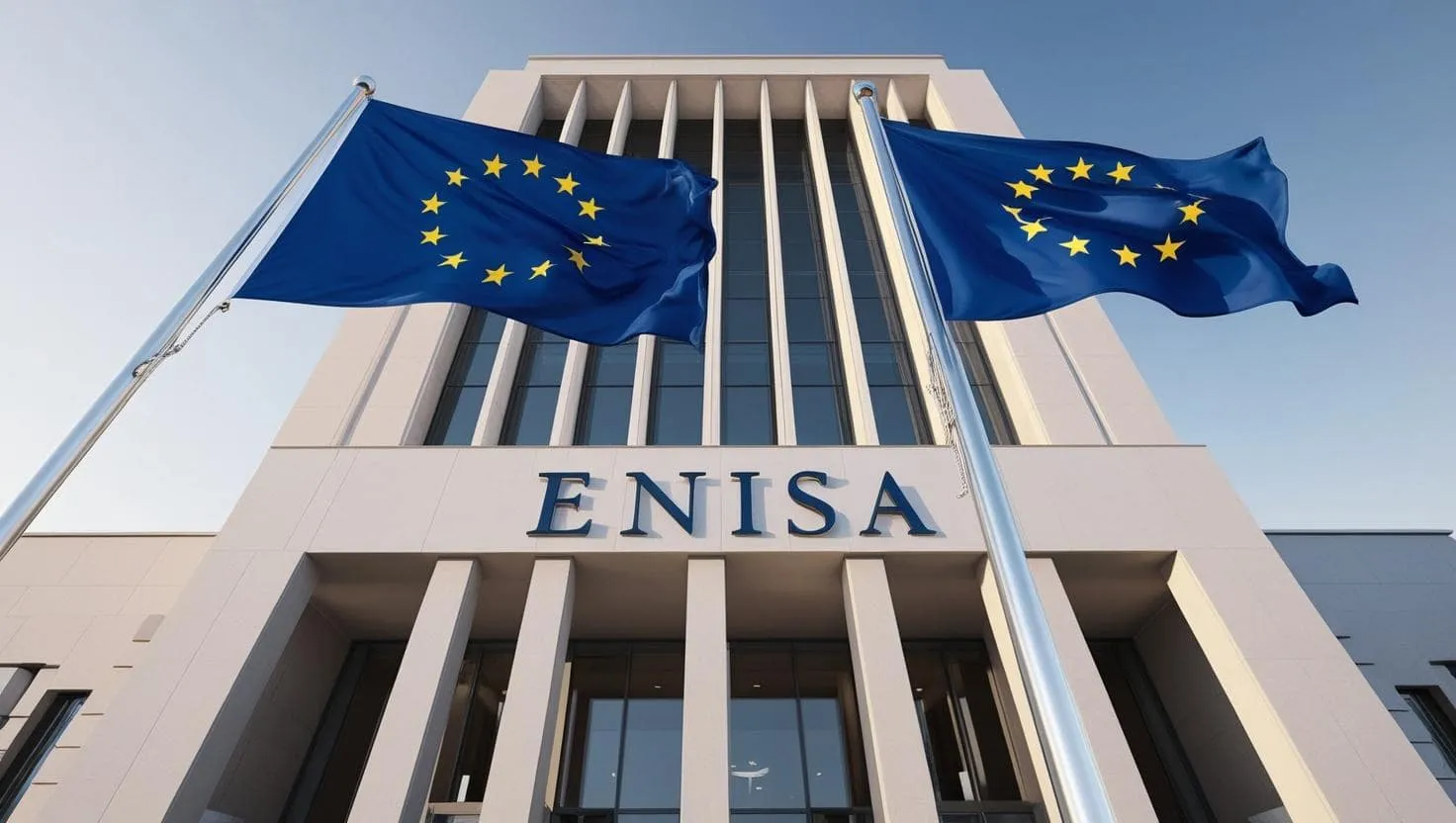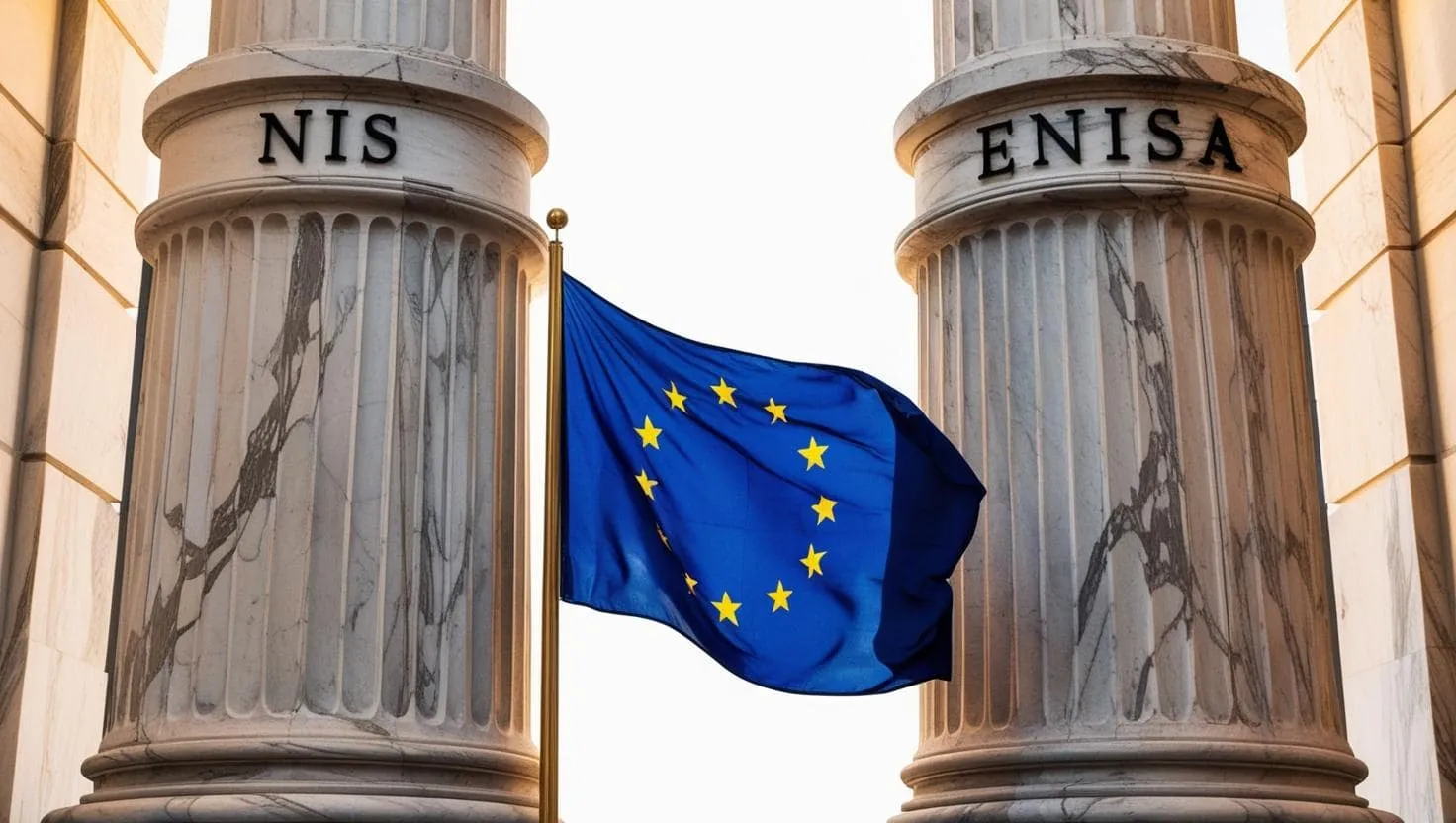
ENISA: A Key Reference in Cybersecurity
Since 2004, ENISA, the European Union Agency for Cybersecurity (European Union Agency for Network and Information Security), has embodied the ambition to build a secure and resilient digital space. In an environment where cyberattacks are becoming more complex and threats are evolving at a rapid pace, the agency plays a strategic role in actively contributing to the EU's cybersecurity policy. It designs and implements European certification schemes to enhance trust in digital products, services, and processes. In close collaboration with Member States and European institutions, ENISA prepares the continent for future cybersecurity challenges. Additionally, the agency partners with organizations and businesses to strengthen trust in the digital economy, enhance infrastructure resilience, and ensure citizens' digital security. Always vigilant, it promotes knowledge sharing, develops robust structures, and trains future professionals while leading impactful awareness campaigns. The EU Cybersecurity Act has further strengthened its role, solidifying its position as a key pillar in building a trustworthy European cyberspace.
The Role of ENISA in European Cybersecurity
ENISA is not just an administrative institution; it represents the convergence point of efforts from Member States, European institutions, and the private sector. Through its technical and strategic expertise, ENISA acts as a catalyst, facilitating information sharing, implementing best practices, and coordinating responses to cyberattacks.
The agency is committed to anticipating developments in the digital landscape by constantly assessing emerging threats. This proactive approach, both pragmatic and rigorous, enables decision-makers and experts to better understand the dynamics of digital risks and to guide security policies accordingly.
Its actions also include drafting reports and recommendations that serve as references for industry professionals. Like a conductor, ENISA synchronizes the efforts of multiple stakeholders to create a symphony of digital security, where every note contributes to the overall protection of the European cyberspace.
Do you want to understand how your critical infrastructures can benefit from our expertise in industrial cybersecurity? Get in touch with our experts!
ENISA's Objectives and Mission
ENISA’s Objectives: 5 Key Areas
The agency operates around five key areas:
- Support for European Legislation: ENISA assists in the implementation of essential legislative frameworks such as the NIS Directive and the Cybersecurity Act. It provides guidelines to help Member States transpose and apply these standards uniformly across the region.
- Strengthening Cybersecurity Capabilities: Training and certifying professionals are at the heart of its mission. Through awareness programs and the development of specific certifications, the agency raises the competence levels of cybersecurity stakeholders.
- Coordination of Incident Responses: Given the increasing number of industrial cyberattacks, ENISA coordinates real-time responses between national authorities and private companies. It fosters the creation of rapid alert networks to minimize the impact of incidents.
- Development of Research and Innovation: The agency actively promotes research by collaborating with academic institutions and industry partners to develop innovative solutions, particularly in cloud computing, IoT, and critical infrastructures.
- Creation of Policies and Guidelines: Finally, ENISA plays a key role in shaping cybersecurity policies. Its recommendations, based on in-depth risk analysis, provide decision-makers with a solid reference framework for implementing effective strategies.

ENISA’s Mission: Strengthening Digital Resilience
One of ENISA’s key missions is to strengthen the European Union’s digital resilience by reducing the vulnerability of critical infrastructures and ensuring a high level of protection for personal and sensitive data. To achieve this, ENISA carries out several actions:
- Threat and Vulnerability Assessment: The agency regularly conducts assessments of emerging threats and vulnerabilities in cybersecurity. These reports help businesses and governments better understand risks.
- Awareness and Information: ENISA publishes numerous reports, studies, and recommendations that serve as key resources for policymakers, businesses, and citizens, raising awareness of cybersecurity challenges.
- Development of Certifications and Labels: To help ensure the security of digital products and services, ENISA develops certifications that validate the security levels of solutions offered by companies. This includes initiatives like the Cybersecurity Act, which establishes a framework for European cybersecurity certification.
ENISA and the NIS Directive: A Key Pillar of European Cybersecurity
Adopted in 2016, the NIS Directive (Network and Information Systems) marks a major step in securing networks and information systems in Europe. ENISA plays a strategic role by providing guidance and operational support to member states.
Implementation of the Directive
The NIS Directive requires member states to strengthen the security of essential infrastructures. In this context, ENISA intervenes by:
- Providing Recommendations: ENISA develops practical guides to help implement security measures.
- Facilitating Cooperation: The agency supports the creation of national cooperation groups, enabling smooth information exchange on cyber threats.
- Risk Assessment: Through regular audits, ENISA identifies vulnerabilities and proposes appropriate solutions.
This collaborative approach helps create a robust security ecosystem where prevention and rapid response are key priorities. Each member state, leveraging ENISA’s work, can tailor its strategies to the specific challenges of its environment.

ENISA and the Cybersecurity Act: European Certification
One of the most significant developments in European cybersecurity has been the introduction of the Cybersecurity Act in 2019, which strengthened ENISA's mandate and created a framework for cybersecurity certification at the European level. This legislation aims to harmonize and ensure the security of digital products and services across the EU. The Cybersecurity Act enables ENISA to issue cybersecurity certifications to businesses and products, with the goal of enhancing trust in the technologies used by businesses and European citizens.
European Certification
One of the most notable innovations is the establishment of a certification system. Through this initiative, digital products and services are evaluated based on common criteria across the EU, thus providing consumers and businesses with a reliable security guarantee.
The goals of this certification are multiple:
- Standardization of norms: Facilitate the assessment of security solutions by imposing common standards.
- Building trust: Provide users with assurance regarding the robustness of the technologies used.
- Encouraging innovation: Stimulate the development of advanced security technologies by promoting certified products.
ENISA, with its technical expertise and in-depth understanding of digital issues, plays a key role in implementing these certifications. This normative framework helps establish a genuine culture of security, akin to an architect ensuring the integrity of the structure they build.
To discover our certified industrial cybersecurity solutions tailored to your needs, contact our team now.
Digital Resilience at the Heart of Action
ENISA's mission goes far beyond simply preventing cyberattacks. It aims to strengthen digital resilience across the European Union, addressing the vulnerability of critical infrastructures and the protection of sensitive data.
Threat and Vulnerability Assessment
ENISA regularly conducts thorough risk assessments to anticipate the evolution of threats. These analyses allow for:
- Identifying weak points in information systems.
- Highlighting emerging trends in cyberattacks.
- Proposing corrective measures tailored to each sector.
Thanks to these assessments, decision-makers and security officers are provided with concrete tools to enhance their protection mechanisms.
Awareness and Training
Furthermore, the agency stands out for its efforts in raising awareness. The reports, studies, and recommendations it publishes are not just technical documents; they are genuine guides designed to inform both experts and the general public. This pedagogical approach, both direct and nuanced, helps democratize the understanding of cybersecurity issues.

Critical Infrastructure Security
Critical industrial infrastructures, whether related to energy, transportation, telecommunications, or other industrial sectors, are particularly exposed to cyberattacks. ENISA is focused on developing specific strategies to enhance the protection of these essential sectors, thus ensuring the continuity of vital services for society.
Collaboration with Member States and Private Stakeholders
The cooperation between Member States and ENISA is crucial in building a coherent cybersecurity strategy across the EU. ENISA facilitates the exchange of information between national authorities and private companies, ensuring a coordinated response to cyber threats. This approach includes rapid response mechanisms to incidents, effective crisis management, and continuous sharing of information on vulnerabilities.
Since 2010, ENISA has organized the biennial cross-border exercise “Cyber Europe”. This large-scale cyber crisis simulation is based on realistic scenarios inspired by real events and threats. Developed in collaboration with European cybersecurity experts, “Cyber Europe” tests participants' ability to manage advanced technical incidents and exchange critical information in complex situations.
This exercise brings together leading specialists from both the public and private sectors in the EU and the EFTA (European Free Trade Association), as well as various European institutions and agencies, thus collectively strengthening their technical and operational capabilities.
Need help with industrial cybersecurity? DATIVE secures your critical infrastructures. Contact us.
Conclusion
ENISA undeniably positions itself as a central player in shaping cybersecurity in Europe. Through its role in coordination, advisory, and innovation, the agency manages to foster trust and resilience in an ever-evolving digital environment. Its involvement in implementing the NIS Directive, deploying the Cybersecurity Act, and developing technical standards makes ENISA a true pillar for critical infrastructure security and data protection.
In a world where the sophistication of cyberattacks continues to grow, ENISA's expertise is essential. By fostering cooperation among various stakeholders and conducting awareness and training actions, the agency ensures robust collective defense. For businesses and institutions wishing to adopt a proactive approach, ENISA's roadmap provides an invaluable source of best practices and insightful recommendations.
In summary, ENISA is not just a European institution; it is a symbol of commitment and innovation, ensuring that cybersecurity remains a strategic priority in the digital age.

References
- NIS Directive (Network and Information Systems) : A legal framework aimed at strengthening the security of networks and information systems in the EU.
- Cybersecurity Act : European legislation enacted in 2019, which strengthens ENISA's mandate and introduces a certification system for digital products and services.
- EU Cybersecurity Certification Framework (EU CCF) : A certification framework that harmonizes security standards across the European Union.
- General Data Protection Regulation (GDPR) : Although focused on personal data protection, this regulation directly impacts cybersecurity practices within businesses.
FAQ
Question 1: What is ENISA and why is it important for the EU?
ENISA is the European Union Agency for Cybersecurity. It plays a central role in harmonizing security policies, providing technical recommendations, and coordinating responses to incidents across all member states.
Question 2: How does ENISA contribute to the implementation of the NIS Directive?
The agency provides guidelines, facilitates cooperation between national authorities, and conducts regular risk assessments. It helps member states adapt their cybersecurity strategies to meet the requirements of the directive.
Question 3: What is the Cybersecurity Act and what role does ENISA play in it?
The Cybersecurity Act, adopted in 2019, strengthens ENISA's mandate and introduces a European cybersecurity certification framework. ENISA participates in evaluating digital products and services to ensure they meet strict security criteria.
Question 4: How is European cybersecurity certification beneficial for businesses?
It allows businesses to demonstrate the robustness of their products and services, thus strengthening consumer trust and facilitating the harmonization of security standards within the EU.
Question 5: How does ENISA promote innovation in cybersecurity?
Through strategic partnerships, collaborative projects, and promoting research, ENISA supports the development of cutting-edge technologies, ensuring an appropriate response to emerging threats.





